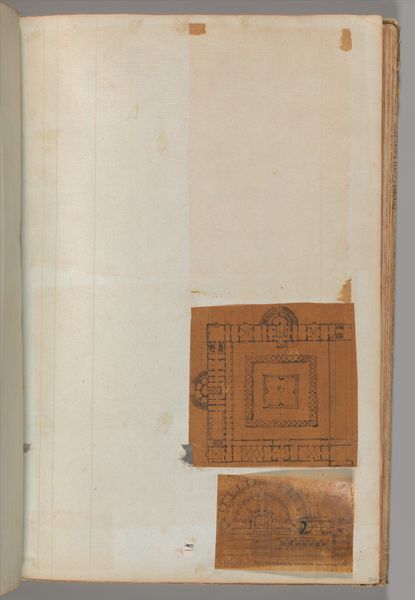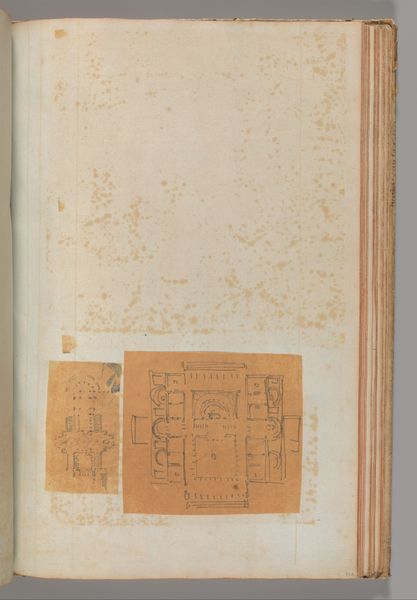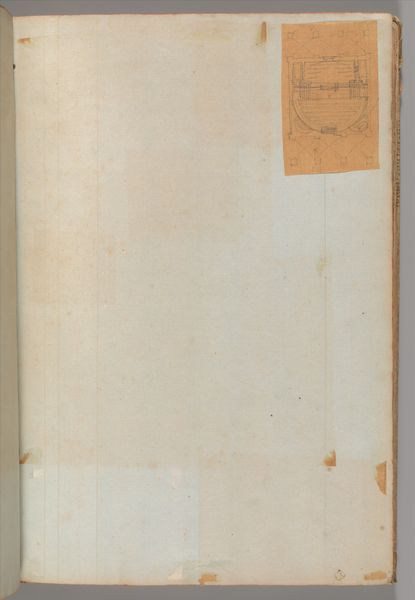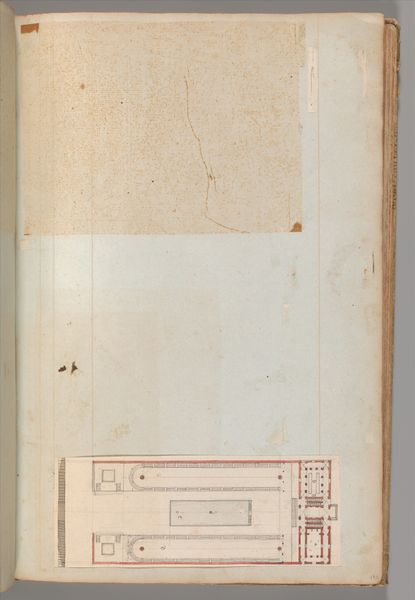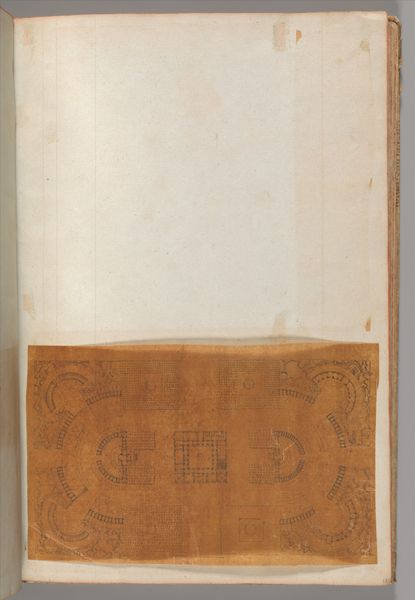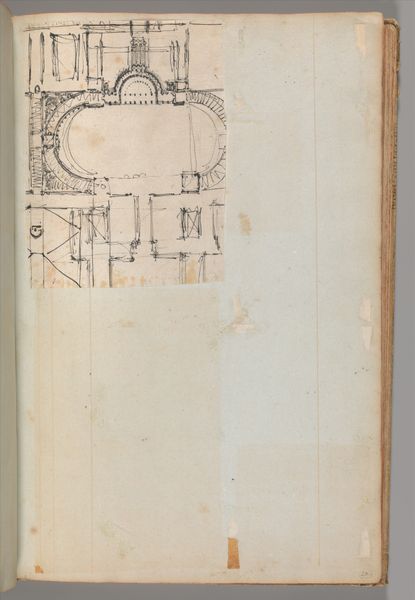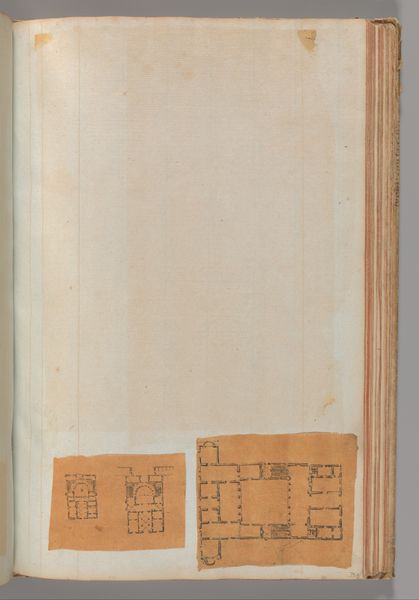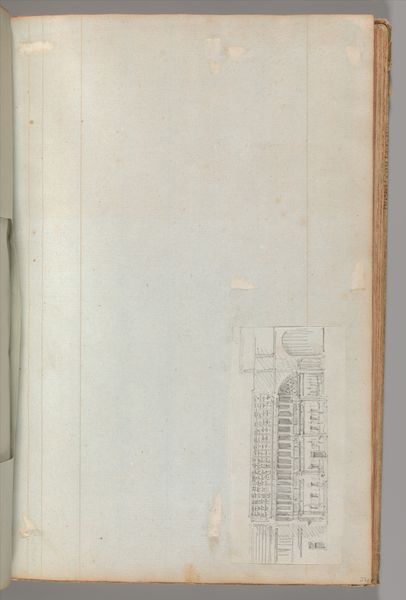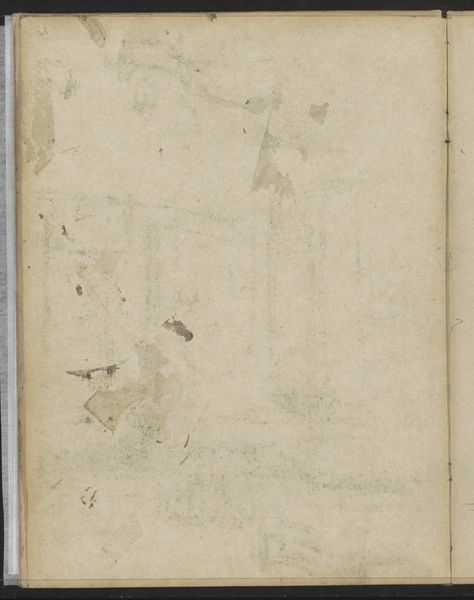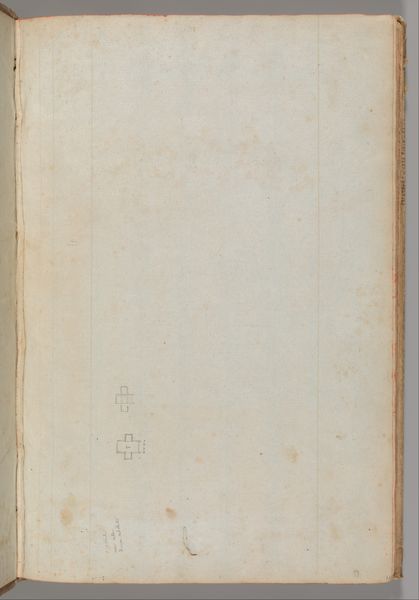
Page from a Scrapbook containing Drawings and Several Prints of Architecture, Interiors, Furniture and Other Objects 1795 - 1805
0:00
0:00
drawing, print, paper, pencil, architecture
#
drawing
#
neoclacissism
# print
#
paper
#
form
#
coloured pencil
#
pencil
#
line
#
academic-art
#
architecture
Dimensions: 15 11/16 x 10 in. (39.8 x 25.4 cm)
Copyright: Public Domain
Curator: Today we’re looking at a page from a scrapbook, dating from 1795 to 1805. The page includes architectural drawings and prints, all created by Charles Percier. Editor: Immediately, I'm struck by how busy it is! A whole world contained within the yellowish hue of this single scrapbook page. Are these sketches, studies, maybe even designs? It feels like sneaking a peek into the artist's mind. Curator: It is fascinating, isn't it? Percier was a key figure in the Empire style, which was an extension of Neoclassicism, and this scrapbook page offers insights into his design process, bringing together prints, sketches, notes all relating to architectural and interior design. Notice the precision in the lines and the almost scientific approach. Editor: And speaking of lines, let’s consider the materials. We have paper, obviously, then pencil, maybe colored pencil, and prints adhered to the page. I’m curious about the scrapbook itself: who made it? What was the paper manufacturing process like then? These kinds of details reflect not only the artist's intentions but the social conditions of the period, including access to paper for these drawings. Curator: Precisely. I am certain the artist collected existing drawings but likely sketched new works on this very page, maybe exploring different options for decorative mouldings or furniture details. Think about the role of the patron, too. How were these designs communicated? This scrapbook may well have functioned as a sample book. Editor: And the placement of these architectural components and furnishings speaks volumes! These are not casual arrangements: by choosing to preserve and paste the drawings this way Percier elevated the labor of architectural rendering, a type of drawing frequently marginalized in definitions of 'high art'. Curator: Yes, I think you are absolutely right to point that out, the composition invites viewers to re-evaluate. Any final reflections on the art? Editor: Seeing this page made me contemplate art's rawest form; just a physical assemblage of ideas glued down onto paper. How can we appreciate all the unnoticed skilled labors needed for a "simple" book page? Curator: I couldn’t agree more. For me it’s a poignant look back, at a moment of creative effervescence, before these architectural dreams materialized into actual structures. It feels like glimpsing potential in its purest form.
Comments
No comments
Be the first to comment and join the conversation on the ultimate creative platform.

